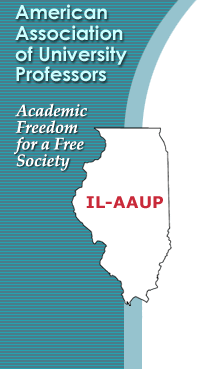Home | IL Academe | About IL AAUP | Conference Corner | Calendar | Services | Committees | Contact Us | Grants | Reports | Links
 |
 |
 |
Affirmitive Action Program Upheld Dear AAUP member, Today, in Fisher v. University of Texas at Austin (Fisher II) the US Supreme Court upheld the constitutionality of the University of Texas at Austin’s affirmative action program. The AAUP had joined an amicus brief in this case, supporting affirmative action. Due to Justice Kagan’s recusal from the case and the death of Justice Scalia, only seven justices took part, resulting in a four-three decision. Justice Kennedy’s opinion for the Court is significant in taking a realistic and reasonable approach that should enable universities to adopt affirmative action programs that meet constitutional requirements. The Court applied the three key criteria from its earlier decision in this case (Fisher I): (1) a university must show that it has a substantial purpose or interest in considering race as a factor in its admissions policy and that considering race is necessary to achieve this purpose; (2) courts should defer, though not completely, to a university’s academic judgment that there are educational benefits that flow from diversity in the student body; and (3) the university must prove that race-neutral alternatives will not achieve its goals of increasing diversity. The Court’s decision recognizes that judges should give due deference to universities in defining educational goals that include the benefits of increasing diversity in the student body, such as the promotion of cross-racial understanding and the preparation of students for an increasingly diverse workforce and society. The Court confirmed that universities must prove that race is considered only as necessary to meet the permissible goals of affirmative action. In particular, the university must prove that “race-neutral alternatives” will not suffice to meet these goals. This was the most controversial aspect of the Fisher I decision. In Fisher II, though, the Court takes a reasonable approach, finding that UT had sufficient evidence that its “Top Ten” admissions policy based on class rank was not adequate, by itself, to meet diversity goals. By adding a “holistic” evaluation of applicants who were not admitted in the “Top Ten” program, UT was able to consider race as one factor in a broader assessment of qualifications. The Court noted that the “prospective guidance” of its decision is limited to some extent by the particularities of the UT case. Despite this, the Court’s decision does provide important guidance to universities concerning the criteria that will be applied in evaluating affirmative action programs. The Court also emphasizes that universities have “a continuing obligation” to “engage[] in periodic reassessment of the constitutionality, and efficacy, of [their] admissions program[s].” While this requires ongoing study and evaluation by universities, the Court’s decision creates a significant and positive basis for universities to adopt affirmative action programs that meet constitutional requirements. Cordially, The mission of the AAUP is to advance academic freedom and shared governance; to define fundamental professional values and standards for higher education; to promote the economic security of faculty, academic professionals, graduate students, post-doctoral fellows, and all those engaged in teaching and research in higher education; to help the higher education community organize to make our goals a reality; and to ensure higher education's contribution to the common good. |
|